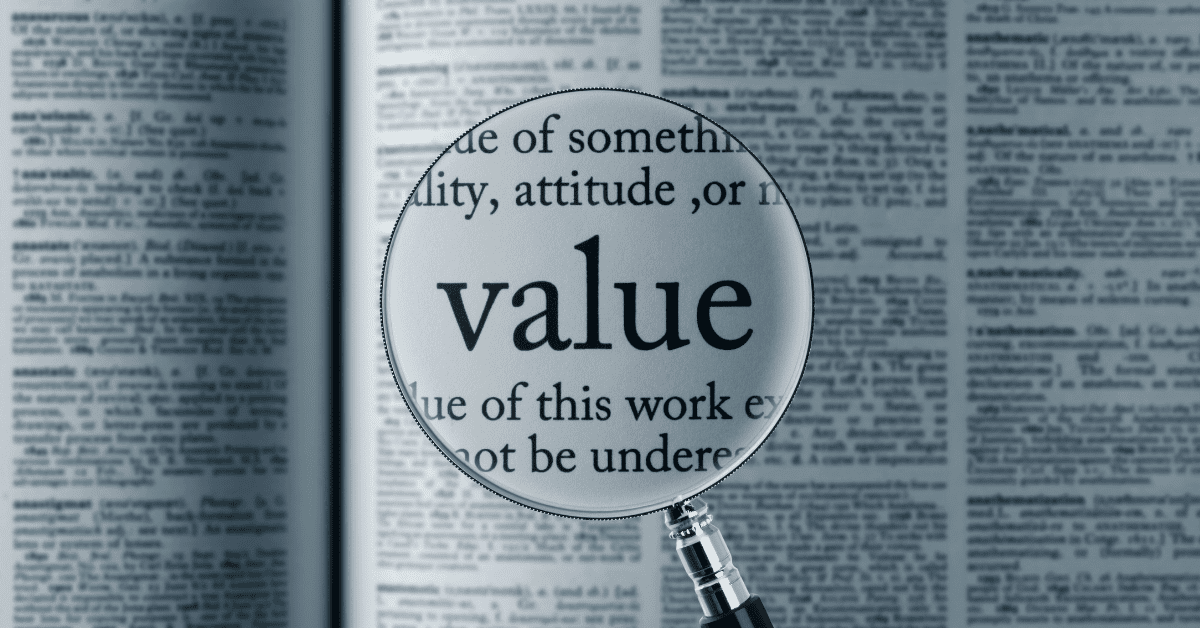
From sentimental to liquidation to market, columnist Phil Hardwick says when it comes to value, there are many kinds, depending on the purpose and use.
When entrepreneurs appear on Shark Tank, the announcer introduces them by saying something like this: “This person is seeking 400 thousand dollars for a five percent investment in their company.” A few sharks then put pen to paper, make a calculation, and announce, “What makes you think your company is worth $8 million?”
So how did the sharks come up with $8 million? The answer is that they simply divided $400,000 by .05. If 5% ownership equals $400,000, it means that 1/20 of the company equals $400,000, and therefore 20/20 (or 100%) of the company equals $8 million.
That’s one way to determine value. But that’s only the beginning. Perhaps a better way to say it would be that it’s a way to estimate value.
Let’s discuss value.
When it comes to value, there are many kinds, depending on the purpose and use. For example, there is sentimental value on one extreme and liquidation value on the other. Sentimental value is a type of value that involves feelings that the buyer has for the item being sold. For example, a grandchild who has positive memories about visiting their grandparents would be willing to pay more for “the ole home place” than almost all other buyers. Liquidation value, on the other hand, usually refers to the value of a company that is going out of business and would probably sell at a lower price than normal.
There are four elements of value, often referred to by the acronym D.U.S.T. They are Demand, Utility, Scarcity and Transferability. Let us review each in terms of the value of real estate.
Demand is the need or desire for possession or ownership. It assumes that there is the financial wherewithal to purchase the item. The demand for real estate is determined by many factors. Yes, location, location, location probably has the most impact on value. But so does demographics, mortgage interest rates, age of property improvements, supply, and many more. In the current environment, we are seeing that interest rates are having a noticeable effect. Demand for first houses is often being satisfied by rental homes.
Utility is the property’s usefulness, i.e. that it can be used for the purposes intended. A house has little or no use if it doesn’t have a roof or plumbing. In real estate, it is the property’s ability to satisfy the wants and needs of potential residents. For example, the number of bedrooms, parking, floor plan, etc.
Scarcity simply means that there is a limited or finite supply. Scarcity drives up value if there is demand for a product or service.
Transferability is the ease with which ownership rights are transferred from the owner to the other party. Is it easy to transfer property in your community? One thing that Mississippi discovered after Hurricane Katrina was that the transfer of property rights in the disaster area was negatively affected in many cases by poor legal descriptions, loss of land records, and a variety of title issues.
The most often used value term when it comes to real estate is market value. Here’s the definition as taken from the Uniform Residential Appraisal Report Form, which real estate appraisers complete for FHA and similar loans.
DEFINITION OF MARKET VALUE: The most probable price which a property should bring in a competitive and open market under all conditions requisite to a fair sale, the buyer and seller, each acting prudently, knowledgeably and assuming the price is not affected by undue stimulus. Implicit in this definition is the consummation of a sale as of a specified date and the passing of title from seller to buyer under conditions whereby: (1) buyer and seller are typically motivated; (2) both parties are well informed or well advised, and each acting in what he or she considers his or her own best interest; (3) a reasonable time is allowed for exposure in the open market; (4) payment is made in terms of cash in U. S. dollars or in terms of financial arrangements comparable thereto; and (5) the price represents the normal consideration for the property sold unaffected by special or creative financing or sales concessions granted by anyone associated with the sale.
The above is a very basic discussion of what causes something to have value. In an upcoming column we will further discuss types of value and ways to estimate value, especially as it relates to an ongoing business.











